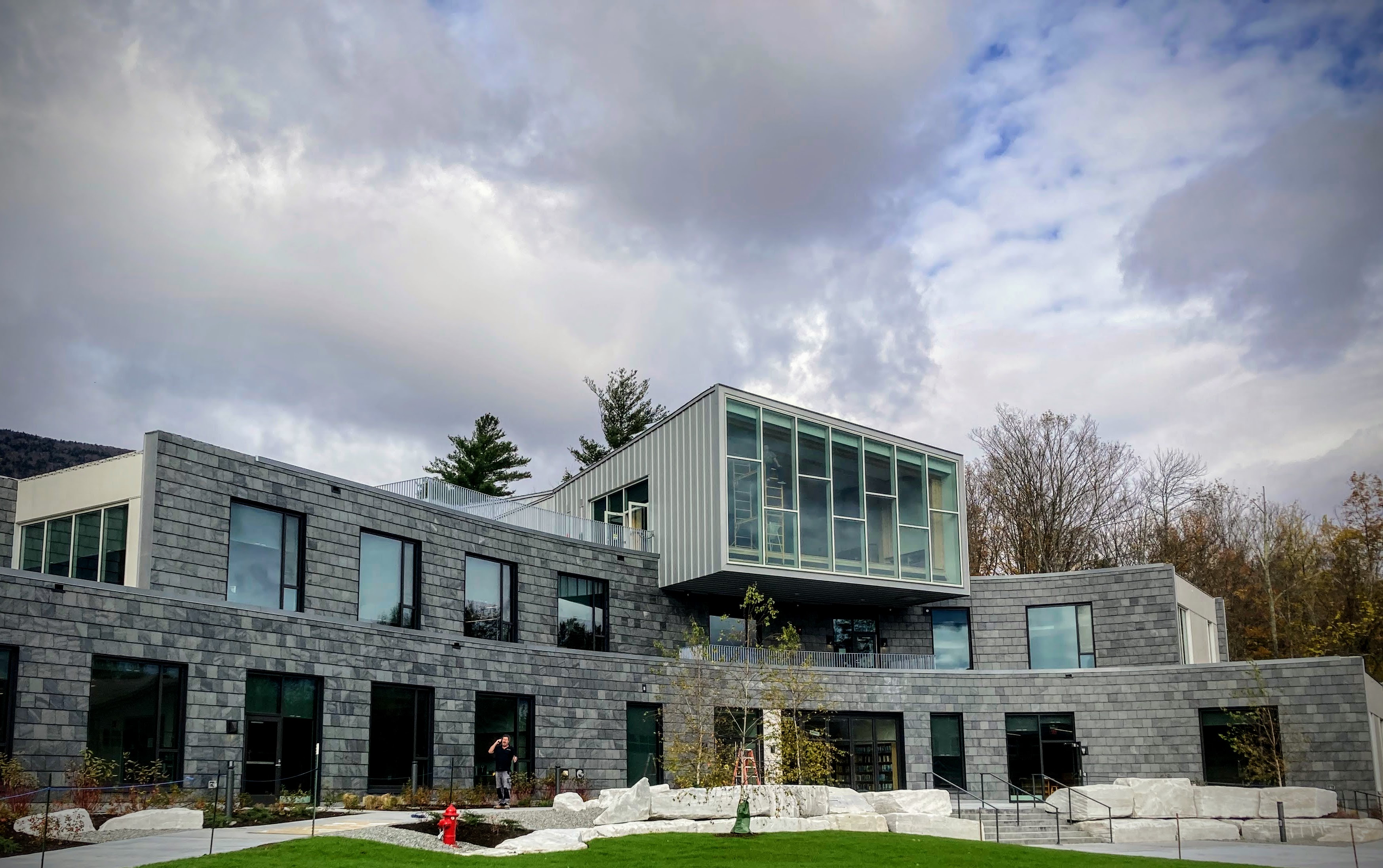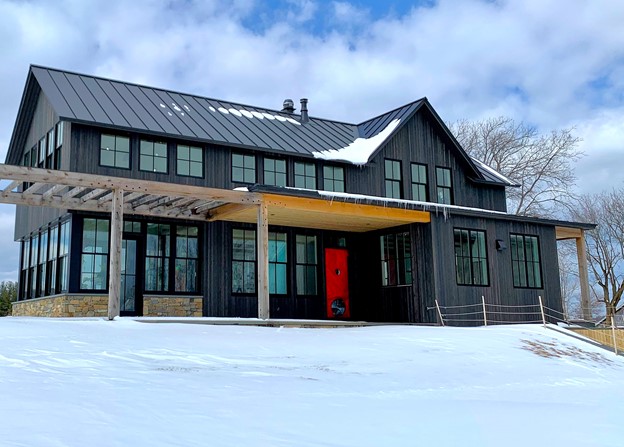Cx Associates now offers an Energy Management and Information System (EMIS). We’ve built a set of customizable dashboards to serve up energy insights, fault diagnostics, and utility-grade cost savings in a browser-based platform. And we’re ready to get yours launched.
4 min read
Forgoing Band-Aids: Approaching and Fixing Building Issues Holistically
By Daniel Tuhus-Dubrow on Jun 28, 2022 10:43:00 AM
June 2022 update: Given the current supply chain and labor shortages the construction industry is facing in 2022, looking after your building's existing systems becomes even more important. With equipment delivery for major systems sometimes many months away, retrocommissioning your existing systems can help tune them up to keep them in tip-top shape to get more usable -- and efficient -- life out of them.
When people ask me what I do for work, I generally tell them I’m a building systems engineer, with a big focus on making facilities more energy efficient and comfortable for occupants. One common part of my job entails going to a building to perform an energy audit or assessment. During these visits, we follow the same straightforward outline:
- Walk through the site
- Inventory all energy-related equipment including lighting, mechanical systems, building envelope, etc.
- Speak with the building operator about how they run the building
- Ask the building owner, occupants, and operator about and any issues or concerns they have regarding maintenance, equipment that is not working properly, or comfort problems.
Topics: Energy Efficiency Building Performance & Technology retrocommissioning Energy Management Existing Building problem solving Energy Planning energy monitoring & solutions Energy Audit
5 min read
Our Journey Towards Equity, Diversity, and Inclusion
By Eveline Killian on Jun 16, 2022 11:00:00 AM
It has been two years since the latest onset of this country’s reckoning with the unequal treatment of Black and People of Color in our society. While the murder of George Floyd was a turning point for many, since then the division within our country seems only to be growing wider, with each ‘side’ becoming more entrenched and insistent in their perspective.
Topics: Public Policy Workplace & People Social Responsibility Equity DEI Inclusion diversity
8 min read
Decarbonization: Fight Climate Change with Your Building
By Daniel Jordan on Apr 26, 2022 11:00:00 AM
Your building’s climate impacts begin with every mechanical, electrical, and envelope system on which it’s built. Identifying effective greenhouse gas (GHG) reduction measures requires an in-depth knowledge of a building’s systems and how they interact. That’s where our decarbonization service can help.
Topics: Climate Change #decarbonization Existing Building Building Envelope Carbon Reduction
5 min read
Blower Door Testing: Hand-in-Hand with Commissioning
By Mike LaCrosse on Mar 31, 2022 10:00:00 AM
In Vermont’s commercial construction industry, the word is well out there by now that the 2020 Commercial Building Energy Standards mandate building air barriers receive special attention, to some degree – either at post-envelope construction by way of a blower door test, or throughout the construction phase by way of commissioning (no blower door test). I’ve discussed portions of this in the past when it was relatively new. The 2021 IECC release now also mandates either air barrier commissioning or blower door testing. It will be some time before states begin to adopt this version of the code, but it is only a matter of time. So, I thought it a good idea to get out ahead and discuss why I think we, as an industry, should be considering the two of these options in harmony, rather than separately.
Topics: commissioning design review Building Envelope
5 min read
Green Incentives Reboot: Creating True Incentives to Reduce Carbon Emissions
By Eric Hauser on Mar 16, 2022 10:15:00 AM
Nearly ten years ago, in June of 2012, Cx Associates launched our Green Incentives program. Initially aimed at reducing the carbon footprint of employee commuting and work-related travel, the program provided free bus passes to any employee who wanted one, a free personal CarShare Vermont membership, and provided “incentives” (rewards? More on this in a bit) for employees who walked or cycled to work. At the same time, we stopped offering free parking to employees.
In 2014, Cx Associates was awarded the 2014 Governor’s Award for Environmental Excellence for our Green Incentives program. By most measures, the program was a success! We had achieved nearly 100% employee participation year over year, had reduced miles driven, and caused employees to walk and bike to work more frequently.
Or so we thought.
As we sat on our laurels for the next few (ahem, 7?) years, it began to become clear that we could do more. And in fact, the more we considered the “incentives” we were offering, the less they seemed like actual incentives, and began to look more like rewards. They were not really changing behavior. Many of our employees live close enough to the office that they would happily walk or cycle to work even if we offered free valet parking. Others were already committed public transit users and wouldn’t drive to work if we wanted them to. Our “award-winning green incentives program” sure sounded nice on paper and in our marketing materials, but there were no teeth behind it. We had failed to walk our talk.
Topics: Sustainability Carbon Reduction Staff Incentive
3 min read
Case Study: Energy Efficiency Done Right in Burlington
By Krystina Kattermann on Feb 17, 2022 10:00:00 AM
Main Street Landing’s Lake and College building on the Burlington waterfront houses important and community-loved businesses including Seventh Generation, Skinny Pancake, and the Peace and Justice center as well as a performing arts center and community gathering spaces. Main Street Landing (MSL) is a property owner member of the Burlington 2030 District, members of which aim to decrease their buildings’ energy, water, and transportation related emissions by 50% compared to the district baseline by the year 2030. MSL takes their membership seriously, fully committing to implementing changes year after year to work towards these goals.
Topics: Sustainability Building Data energy conservation
4 min read
Seeing Value in Installation Checklists for the Building Enclosure
By Mike LaCrosse on Jan 26, 2022 11:00:00 AM
I’m excited to have recently joined the group of like-minded and down-to-earth individuals that comprise Cx Associates, and I’ve quickly learned that all of us here have a vested interest in expanding our minds and honing our craft. A huge part of that is information sharing with one another. In that vein, I’ve had opportunities to catch meaningful snapshots of the MEP commissioning process, allowing me to reflect closely on the process as I know it for the building enclosure. Lately, I’ve been asking myself, “What can be done better on the building enclosure side?” I think one of those things is employing installation checklists.
Topics: Building Envelope Building Enclosure
5 min read
Six of One: GHG Trade-offs in Controls Strategies
By Daniel Jordan on Jan 19, 2022 10:00:00 AM
How much greenhouse gas is in our electricity? This question isn’t just academic for those of us working to decarbonize buildings. In applications that use some combination of fossil fuel and electricity—which is common!—controls strategies for decarbonization depend on being able to make GHG comparisons between fossil fuels and electricity. These scenarios play out in day-to-day commissioning work.
Topics: #decarbonization
4 min read
Ventilation: Is your Building Prepared for Winter?
By Eveline Killian on Oct 13, 2021 10:00:00 AM
The rollercoaster that is the pandemic has shown us that fresh air and purging of room air has an enormous influence on the spread of a virus. The chance of contamination increases by viral load (how much of the air has the virus in it) and the length of time a person is exposed to this contaminated air. The purpose of ventilation is to move the air quickly away and out of the building to decrease both of these conditions.








.jpg)

.jpg)